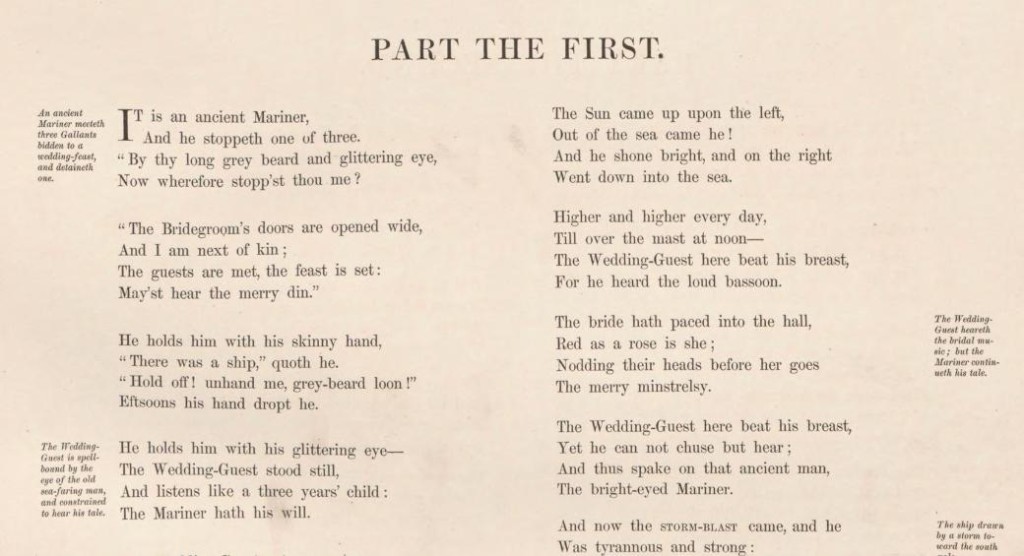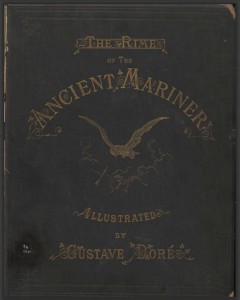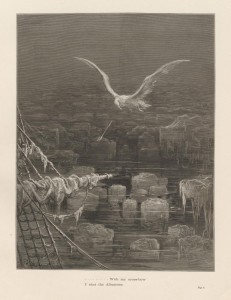“A Sadder and a Wiser Man”: The Rime of the Ancient Mariner


In a response to the Industrial Revolution of the 18th century, a cultural shift that focused on nature, emotions, and individualism developed, primarily in the artistic community. Called Romanticism, the period began just before 1800 and lasted until around 1850. Poet Samuel Taylor Coleridge was at the forefront of the Romantic period, and his poem “The Rime of the Ancient Mariner” (now available on Ohio Memory) exemplifies Romanticism in every way. Its spectral themes, focus on nature (not just in the form of the albatross but of the natural setting in which the poem is set), and elements of the supernatural all combine to build a poem that is gorgeously chilling and Gothic.
Gustave Doré was born in the latter half of the Romantic period but, similarly to Coleridge, clearly shows the influence of Romanticism in the body of work he left behind. In October of 2014 we shared Doré’s illustrations in an 1884 edition of Edgar Allen Poe’s “The Raven” – an additional example of Romanticism – with our readers. In Doré’s illustrations of Coleridge’s poem, we see another remarkable pairing of two extraordinary artists.

“The Rime of the Ancient Mariner” tells the story of a sailor (the Mariner) and the consequences of one horrific act. When a storm forces the Mariner and his fellow crew members of the ship on which he is working to flee south, they find themselves surrounded in ice and unmoving, the air devoid of sufficient wind to propel them forward. An apparent good-luck charm, in the shape of an albatross, joins them, and for nine days they experience good winds and good fortune. Then, for no apparent reason, the mariner kills the albatross. The ship stalls, and a series of horrifying events befall the crew. Eventually, every person on the ship dies, with the exception of the mariner, who is ultimately forced to do penance for the rest of his life after this one despicable act.
Doré captures Coleridge’s tone perfectly, providing us with visual imagery that not only enhances the reading experience but helps us to understand the poem which, we must admit, can be a challenging read. However challenging, though, reading “The Rime of the Ancient Mariner” with a thoughtful eye – and maybe a bit of help – can be life-changing. And, if not, it’s okay with us if you just look at the pictures.
Thank you to Shannon Kupfer, Digital/Tangible Media Cataloger at theState Library of Ohio, for this week’s post!



Leave a Reply
You must be logged in to post a comment.